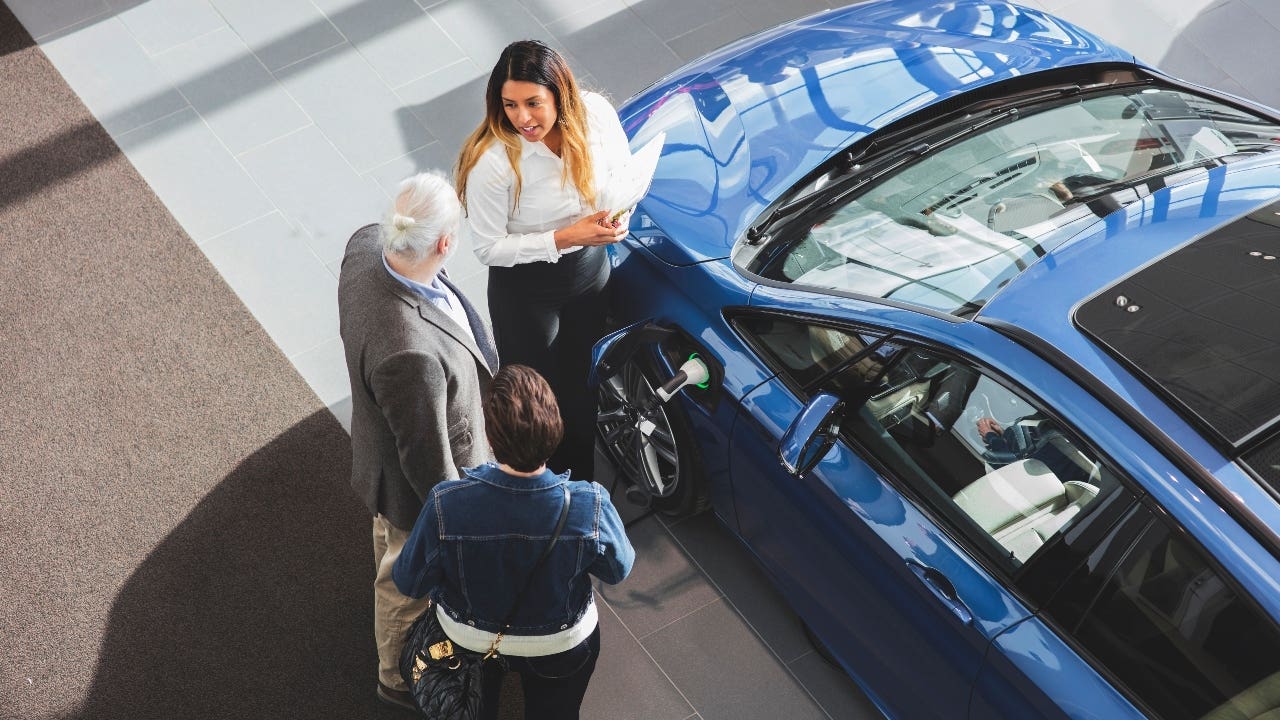6 dealer-installed options to skip at the dealership

The Bankrate promise
At Bankrate we strive to help you make smarter financial decisions. While we adhere to strict , this post may contain references to products from our partners. Here's an explanation for .
Key takeaways
- Dealer options are added accessories and equipment designed to drive up the final cost of the vehicle.
- These dealer options are usually add-ons that you don't need or that you can find for less on your own.
- You can ask that add-ons you don't want be removed, if possible.
You’ve finally settled on a car you like, but the sales pitches don’t stop there. Now the salesperson is using time-tested tactics to upsell you on important-sounding features like rustproofing, VIN etching and extended warranties. But is a new car protection package worth it?
Consider carefully before moving forward with these added features. They’re often unnecessary or available elsewhere for cheaper. You will pay more interest if you roll the cost of these add-ons into your car loan. You can figure out how much you’d actually be paying with an auto loan calculator.
What are dealer options?
Dealer options are accessories and equipment that the dealer adds to the vehicle to increase the sales price of the vehicle. There are three types of options you may come across:
- Factory-installed options: Installed at the factory before the vehicle is shipped to the dealer.
- Port-installed options: Installed on vehicles imported from overseas as they arrive at the port of entry.
- Dealer-installed options: Installed by the dealer after the vehicle reaches the dealership’s lot.
The vehicle’s manufacturer approves options installed at the factory and port. They are typically included in the new vehicle’s warranty. You’ll find them listed on the official window sticker that’s required for new cars. Moreover, the cost won’t vary from dealer to dealer.
In contrast, dealer-installed options aren’t approved by the manufacturer. So, they aren’t included in the vehicle’s warranty. They are not listed on the official window sticker, but they should be detailed on a second sticker on the car. Also, because the dealer installs them, prices vary by dealership.
In general, many dealer options are overpriced and used to increase profits on new vehicle sales.
6 worst dealer options you should avoid
If you are buying a new car, check the vehicle’s stickers for add-ons. While you typically can’t negotiate factory- and port-installed options, you may have some wiggle room with dealer-installed options.
Here are the six worst dealer options — and the smartest alternatives to consider instead.
1. Rustproofing and undercoating
Dealer-applied undercoating can cost as much as $1,000 or as little as $550. It depends on the car, the type of treatment package — basic or premium — and whether it includes extra options like sound-deadening. It can be sold to new car buyers as a separate dealer option or be included in a pricey bundle called an “environmental protection package.” These packages may include paint sealant and fabric protection.
“Cars leaving the factories today all have excellent rustproofing,” says Mike Quincy, automotive writer at the Consumer Reports Auto Test Center in Colchester, Connecticut. “[Dealers] have an incentive to do it because there’s a fair amount of markup they can get on these services.”
2. Fabric protection
Some dealers will provide fabric protection, which is designed to protect your seats from stains.
“A lot of dealers will also eagerly pitch you fabric protection, which is basically a spray that they will put on — a spray that costs them almost nothing, but for which they might then charge you $100 or more,” Quincy says.
3. Paint protection
This dealer option is often promoted by showroom salespeople as a product that offers new cars a year-round no-wax shine that provides a long-lasting barrier against the environment. Protective paint sealant can cost the new car buyer well over $400. You might also see paint and fabric protection bundled together.
4. VIN etching
VIN etching is a procedure that allows you to make an adhesive plastic stencil containing your car’s vehicle identification number, or VIN. You then place that stencil on a window and apply a special acid solution that chemically burns, or etches, the number onto the glass.
VIN etching can be a deterrent to thieves because it makes it nearly impossible for them to profit from selling windows and windshields and makes it more difficult to find a way to dispose of a car once it has been stolen. In fact, it’s recommended by police and auto insurance agencies. Some insurers will even offer a discount on the comprehensive portion of your car insurance or waive your insurance deductibles if your car has the feature.
It’s a straightforward process, but VIN etching as a dealer option can cost the car buyer from $200 to $300. If you do it yourself, you can shave off over $150.
5. Extended warranties
As a dealer option, basic extended warranty policies can start at $1,000 and climb to several thousand dollars for luxury and high-performance cars.
Extended warranties offer bumper-to-bumper protection, covering everything on your car ranging from major system repairs, heating or air issues and engine problems. Extended warranties, on the other hand, do not cover components commonly replaced in routine maintenance.
Plan prices vary by mileage, the term of coverage and deductible level. Consider whether the extended warranty is worth it before buying.
New vehicles typically already come with manufacturer warranties. Even if you’re buying used, you don’t need to get the warranty on the day you buy the car. So, you can shop around if you really want one.
6. Nitrogen in your tires
No matter what your tires are filled with, nitrogen or oxygen, the four wheels pushing your vehicle along will inevitably deflate. Tires can lose air due to a hole in the tread, a poor seal or just general vehicle wear and tear. But many dealers will encourage buyers to add nitrogen to their tires, which can cost up to $400, claiming it will keep your tire pressure from fluctuating.
Unless you are a race car driver needing more consistent pressure from your tires, the additional cost is not worth it. Plus, the air they provide may have no more nitrogen than the air you’re breathing. (In fact, a new FTC car dealer rule currently under review would ban dealers for charging extra in these cases.)
If you really want nitrogen, stopping by a local body shop will cost you $5 to $10 per tire.
How to avoid dealer-installed options
The right options on a vehicle can enhance your driving experience and even boost the car’s value when you are ready to sell it or trade it in. But you don’t have to accept the dealer-installed options you don’t want.
If you find that a new vehicle has some dealer-added options, you can ask the dealer to remove them and adjust the vehicle’s sales price accordingly. In some cases, it may not be possible — for example, if rustproofing or paint protection has already been applied, it may not be removable.
Try to negotiate the price of the vehicle like you normally would if the dealer can’t or won’t get rid of an option. Again, there’s no guarantee that this will work, but even showing a little initiative in negotiation can change the course of the conversation.
For example, consider calling another dealer in the area to get an idea of what it might charge for certain options or even see how much it would cost if you did it yourself. This can give you a good reference point in your negotiations for the best out-the-door price.
If a dealer doesn’t budge, you can pay for the car as-is or walk away.
The bottom line
Dealer-installed options aren’t always worth it. Checking what you’re being charged for is important. While dealers aren’t always willing to remove options they have installed or negotiate on the price, know that these options aren’t standard. You don’t have to accept them.
As with every other aspect of the car-buying process, shop around and compare prices and options from multiple dealers in your area. Ensure you get the best deal available.
Related Articles



